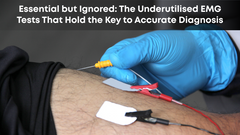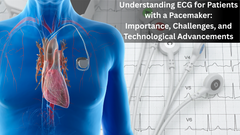Enhancing Ambulance Operations :The Role of Portable Patient Monitors in Medical Emergency Vehicles
In the high-stakes environment of emergency medical services (EMS), the ability to provide accurate, real-time patient monitoring can mean the difference between life and death. This is especially true for air ambulances, where space is limited, and every second counts. Innovations in portable patient monitors are revolutionizing how medical care is delivered in these critical situations.
The Crucial Role of Patient Monitoring in Emergency Medical Services
Patient monitors are essential in EMS for continuously tracking vital signs, ensuring that paramedics can make informed decisions on-the-fly. In air ambulances, the importance of these devices is amplified due to the unique challenges presented by aerial transport, such as turbulence, noise, and limited access to resources. Traditionally, patient monitors have been bulky, limiting their practicality in the compact space of an air ambulance. The need for smaller, more efficient devices is critical to enhance the capability of medical teams to provide continuous care from the scene of an incident to the hospital.
The Evolution of Portable Patient Monitors
The development of portable patient monitors has transformed emergency medical care. These devices now offer comprehensive monitoring capabilities, including ECG, blood pressure, oxygen saturation, and respiratory rate, in a compact, lightweight form. Advances in technology have made these monitors not only smaller but also more efficient, with longer battery life and better data connectivity. The transition from traditional bulky monitors to portable ones represents a significant leap in medical technology. It has enabled paramedics to deliver high-quality care in the most challenging environments, from disaster zones to remote areas.
The Importance of Size and Efficiency in Air Ambulances
In air ambulances, space is at a premium. Medical teams must work in a confined area, often under extreme conditions. The introduction of smaller, more efficient patient monitors has several critical benefits:
> Mobility and Flexibility: Compact monitors can be easily moved and positioned, allowing for better patient access and care.> Reduced Weight: Lighter equipment contributes to the overall weight savings of the aircraft, which can improve fuel efficiency and flight performance.
> Enhanced Performance: Advanced monitors offer more features and better performance, enabling paramedics to provide higher levels of care.
> Longer Battery Life: Efficient monitors with extended battery life ensure continuous monitoring throughout long flights without the need for frequent recharging.
Clarity Medical’s Recobro: A Game Changer in Portable Monitoring
Clarity Medical’s Recobro represents the pinnacle of innovation in portable patient monitors. Designed with the specific needs of air ambulances and field hospitals in mind, the Recobro offers unmatched performance in a compact form.
Key Features of Recobro:
- > Comprehensive Monitoring: Recobro provides continuous monitoring of ECG, SpO2, NIBP, temperature, and CO2, ensuring all vital parameters are tracked in real-time.
- > Lightweight and Portable: Weighing just around 300grams, the Recobro is easy to transport and handle, making it ideal for the confined spaces of air ambulances.
- > Robust Design: Built to withstand harsh conditions, the Recobro is durable and reliable, ensuring it functions accurately in any environment.
- > Long Battery Life: With an extended battery life, the Recobro ensures continuous monitoring during prolonged transport, crucial for long-distance air evacuations.
- > Data Connectivity: Equipped with advanced real-time vital monitoring options, the Recobro allows for seamless communication and data sharing.
Integration of Recobro in Australian Air Evacuations
Australia’s vast landscape and remote areas make air evacuations a critical component of the country's emergency medical services. The integration of Clarity Medical’s Recobro into air evacuation services by NSW Ambulances and Careflight highlights the device's significant impact on improving patient care. This integration has enhanced their capability to deliver high-quality care during air transport. The compact size and efficiency of the Recobro allows paramedics to closely monitor patients' vital signs, ensuring any changes in condition are quickly detected and addressed. The device's ability to provide continuous, real-time data ensures that medical teams can make informed decisions during flight, improving patient outcomes.

Future of Portable Patient Monitors in EMS
The advancements in portable patient monitors like the Recobro signify a promising future for EMS. As technology continues to evolve, these devices will become even more compact, efficient, and feature-rich. Future innovations may include:
- > Enhanced AI Integration: AI could further improve predictive analytics, helping paramedics anticipate and respond to patient needs more effectively.
- > Improved Connectivity: Enhanced data connectivity will facilitate better integration with hospital systems, ensuring seamless patient handovers.
- > Wearable Technology: Integration with wearable devices could provide continuous monitoring from the point of incident to hospital discharge.
Conclusion
The integration of innovative portable patient monitors, such as Clarity Medical’s Recobro, into air ambulances and field hospitals is transforming emergency medical care. These advancements are crucial in improving patient outcomes, especially in the challenging environments of air evacuations. By providing comprehensive, real-time monitoring in a compact and efficient form, devices like the Recobro empower medical teams to deliver the highest standard of care, ensuring that every second counts when it matters most.












